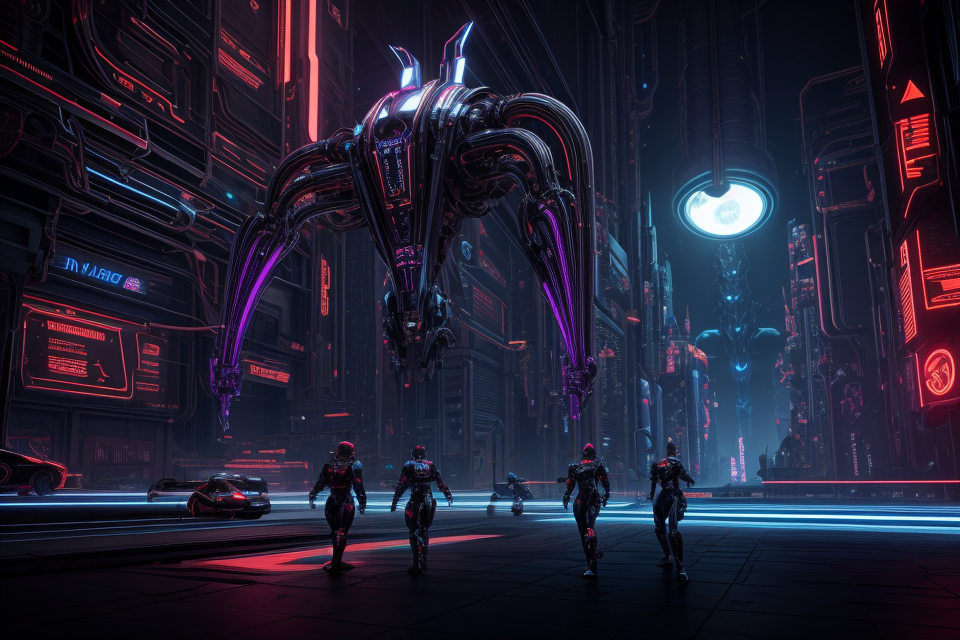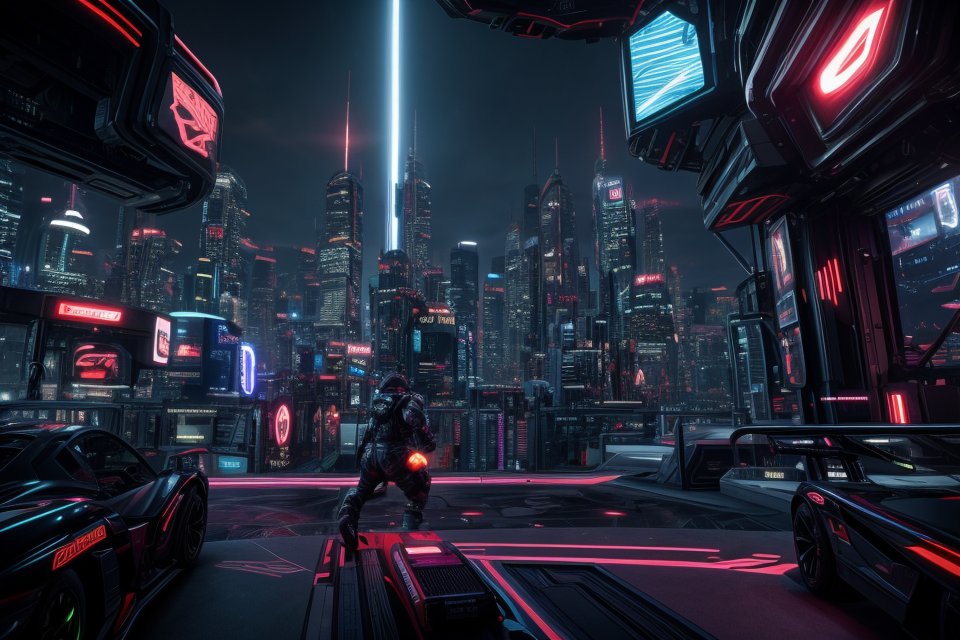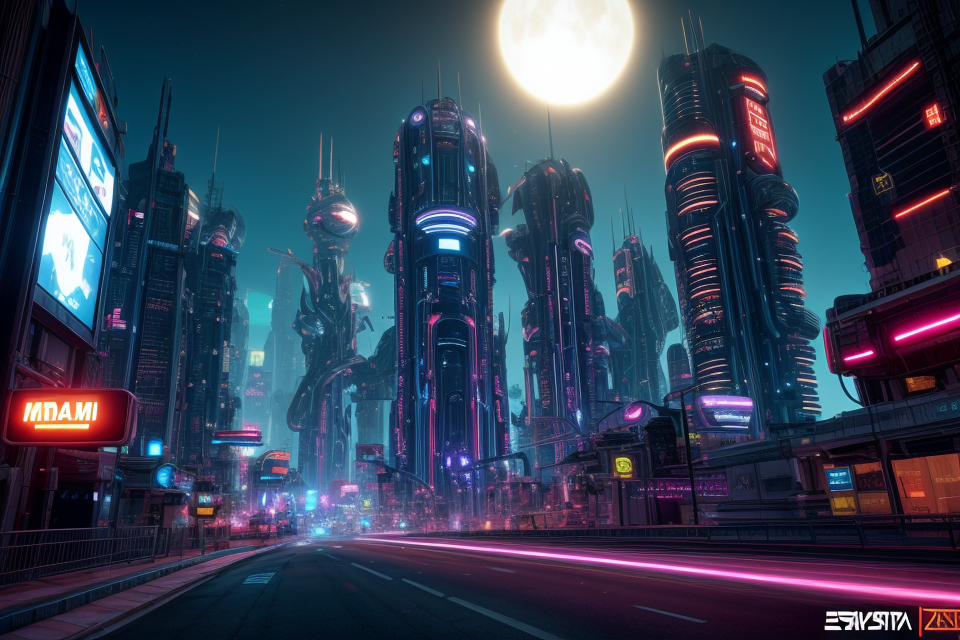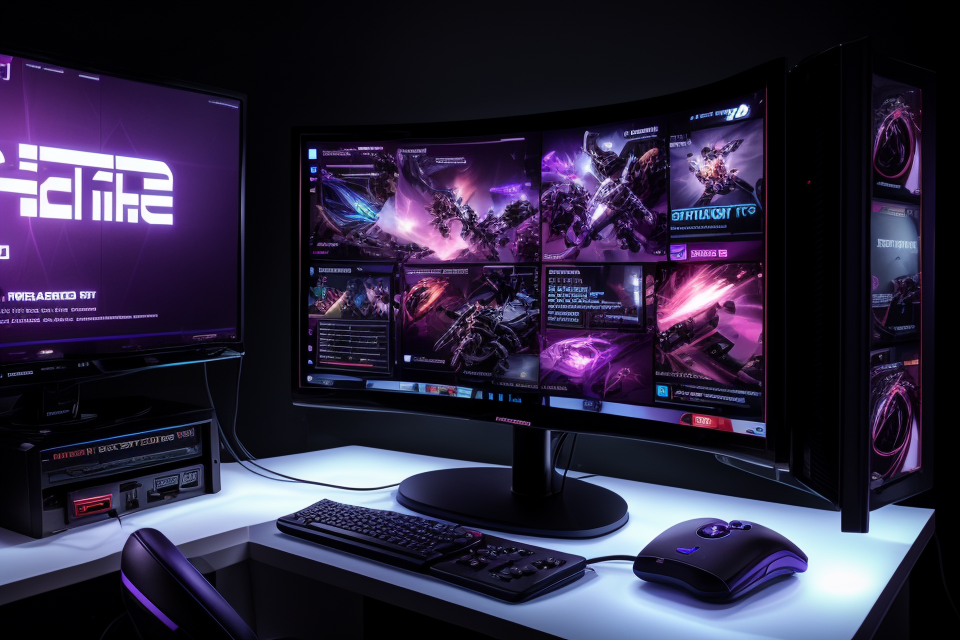
Have you ever picked up a game and been immediately drawn in by its stunning visuals? Or maybe you’ve put down a game after just a few minutes because the graphics were too poor to keep your attention. The visual appeal of a game can make or break a player’s experience, and in this article, we’ll be exploring the secrets behind what makes a game visually appealing. From stunning artwork to smooth animations, we’ll delve into the various elements that come together to create an immersive and captivating gaming experience. So, let’s get started and unlock the secrets of what makes a game visually appealing!
Understanding Visual Appeal in Gaming
The Role of Graphics in Game Design
- The Importance of Graphics in Game Design
Graphics play a crucial role in game design as they set the tone for the overall aesthetic of the game. High-quality graphics can make a game more immersive, engaging, and enjoyable for players. Additionally, graphics can help to establish the game’s setting, characters, and story, allowing players to become more invested in the game world.
- Advancements in Graphics Technology
Advancements in graphics technology have revolutionized the gaming industry, enabling developers to create games with visually stunning graphics that were once thought impossible. These advancements have allowed for more realistic and detailed game worlds, more complex character models, and more sophisticated lighting and particle effects. As a result, games have become more immersive and lifelike, pulling players into the game world like never before.
- The Impact of Graphics on Player Experience
The impact of graphics on player experience cannot be overstated. Games with high-quality graphics tend to have higher replayability, as players are more likely to revisit a game with visually appealing graphics. Additionally, graphics can influence a player’s emotional response to a game, making it easier for players to become invested in the game world and its characters. In turn, this investment can lead to a more rewarding and satisfying gaming experience for players.
Color Theory and Its Effect on Game Visuals
- Color psychology in gaming
- Choosing color schemes for different genres
- Balancing visual appeal with immersion
When it comes to creating visually appealing games, color theory plays a crucial role. The way colors are used in a game can evoke different emotions and create various moods, making them an essential element in game design. In this section, we will explore the impact of color psychology in gaming, how to choose the right color schemes for different genres, and how to balance visual appeal with immersion.
Color Psychology in Gaming
Color psychology is the study of how colors can affect human behavior and emotions. In gaming, colors are used to create a specific atmosphere, set the tone, and guide the player’s experience. For example, red is often associated with danger, while blue is associated with calmness. By using these colors strategically, game designers can manipulate the player’s emotions and create a more immersive experience.
Choosing Color Schemes for Different Genres
Choosing the right color scheme is crucial to the success of a game. Different genres require different color schemes to create the desired atmosphere. For example, a horror game might use dark, muted colors to create a creepy and unsettling atmosphere, while a racing game might use bright, vibrant colors to create a sense of speed and excitement.
In addition to creating the right atmosphere, color schemes can also help differentiate between different elements in a game. For instance, using different colors for enemies and friendly characters can make it easier for players to distinguish between them.
Balancing Visual Appeal with Immersion
While color theory is an essential element in creating visually appealing games, it’s also important to balance visual appeal with immersion. If a game is too flashy or distracting, it can take away from the overall experience. Game designers must find a balance between using colors to create a visually appealing game and using them to enhance the immersion and gameplay.
In conclusion, color theory plays a vital role in creating visually appealing games. By understanding the psychology of colors, choosing the right color schemes for different genres, and balancing visual appeal with immersion, game designers can create games that are both visually stunning and engaging.
Level Design and Environmental Storytelling
Creating immersive worlds
One of the primary aspects of level design that contributes to a game’s visual appeal is the creation of immersive worlds. This involves designing environments that are not only visually stunning but also encourage players to explore and interact with them. Factors that contribute to an immersive gaming experience include:
- Attention to detail: This involves incorporating a wide range of visual elements that help create a sense of realism and depth within the game world. Examples of these elements include intricate architecture, detailed textures, and the inclusion of realistic lighting and weather effects.
- Sense of scale: A game’s world should be designed in such a way that it conveys a sense of scale to the player. This can be achieved by incorporating large, open environments that give players a sense of the vastness of the world they are exploring. It can also be achieved through the use of miniature environments that highlight the small, intimate moments within the game world.
- Cohesive design: A game’s world should be designed in a way that creates a cohesive, believable environment. This means that the visual elements within the world should work together to create a unified whole. For example, the architecture and landscaping should be consistent throughout the world, and the environmental storytelling should be seamless and intuitive.
Conveying story through level design
Another key aspect of level design that contributes to a game’s visual appeal is the use of environmental storytelling. This involves using the game world to convey a story or narrative to the player, without relying on traditional cutscenes or dialogue. Examples of environmental storytelling include:
- Environmental puzzles: These are puzzles that are built into the game world itself, and that require players to explore and interact with their surroundings in order to solve them. Examples of environmental puzzles include finding hidden keys, uncovering ancient ruins, and solving complex riddles.
- Environmental hazards: These are obstacles or challenges that are built into the game world, and that require players to navigate around or overcome in order to progress. Examples of environmental hazards include treacherous terrain, dangerous creatures, and environmental disasters.
- Environmental details: These are small details within the game world that help to flesh out the story and create a more immersive experience for the player. Examples of environmental details include signs, graffiti, and other small objects that help to create a sense of history and atmosphere within the game world.
The role of environment in player engagement
Finally, the role of the environment in player engagement should not be overlooked. A game’s world should be designed in such a way that it encourages players to explore and interact with it. This can be achieved through the use of secrets, hidden areas, and other surprises that are scattered throughout the game world. Additionally, the environment should be designed in such a way that it encourages players to take risks and try new things, rather than simply following a set path. This can be achieved through the use of dynamic environments that change in response to player actions, or through the use of branching paths that allow players to explore different parts of the game world.
Key Elements of Visually Appealing Games
Character Design and Animation
Creating memorable characters is an essential aspect of visually appealing games. A well-designed character can make a game more engaging and enjoyable for players. Characters should be unique and distinct, with their own personalities and backstories. They should also be visually appealing, with detailed and well-designed appearances that are consistent with the game’s theme and setting.
In addition to a well-designed appearance, character customization options are also important for player engagement. Players should be able to customize their characters to suit their preferences, whether it’s changing their clothing, hairstyle, or accessories. This allows players to personalize their gaming experience and feel more invested in the game.
Realistic character movements and animations are also crucial for a visually appealing game. Characters should move and behave in a way that is believable and consistent with their design. This includes facial expressions, body language, and movements. Realistic animations can make the game more immersive and enhance the overall visual experience for players.
Special Effects and Particle Systems
In the world of gaming, special effects and particle systems play a crucial role in enhancing the overall visual appeal of a game. These effects not only make the game more visually stunning but also add to the overall immersive experience.
Special effects in games are used to create a sense of drama and excitement, drawing the player’s attention to specific events or actions. These effects can range from explosions, fire, and smoke to more subtle effects like lens flares and color changes. By strategically placing these effects, game designers can create a sense of anticipation and excitement for the player, making the game more engaging and enjoyable.
Particle systems, on the other hand, are used to create realistic effects like smoke, fire, and water. These systems work by simulating the behavior of individual particles, allowing for a wide range of realistic effects. By using particle systems, game designers can create more realistic environments and actions, which in turn makes the game more immersive and believable.
However, it is important to balance the use of special effects and particle systems with performance considerations. Overuse of these effects can lead to decreased performance and framerate, which can negatively impact the overall gaming experience. Therefore, game designers must carefully consider the impact of these effects on performance and use them in a way that enhances the game without sacrificing performance.
In conclusion, special effects and particle systems are essential elements in creating visually appealing games. By strategically using these effects, game designers can create a sense of drama and excitement, as well as realistic environments and actions. However, it is important to balance the use of these effects with performance considerations to ensure a seamless and enjoyable gaming experience.
Lighting and Shadows
Creating an immersive gaming experience goes beyond just having stunning graphics. Lighting and shadows play a crucial role in making a game visually appealing. They help create a sense of depth, atmosphere, and realism. Here are some of the key aspects of lighting and shadows in visually appealing games:
- Realistic lighting and shadows: Realistic lighting is essential in creating an immersive environment. It helps to simulate the natural lighting conditions of the real world, which in turn makes the game more believable. Realistic shadows are also crucial as they help to create a sense of depth and dimension. They make the game world feel more grounded and authentic.
- Creating mood with lighting: Lighting can be used to set the tone and mood of a game. For example, a dark and ominous atmosphere can be created by using low-key lighting with dimly lit areas and shadowy corners. On the other hand, bright and vibrant lighting can be used to create a more upbeat and energetic atmosphere.
- Shadows for environmental storytelling: Shadows can be used to convey information about the game world. For instance, a shadow on a wall can indicate the position of a light source, while a dark corner can hint at something hidden or unknown. This use of shadows can add an extra layer of depth to the game world, making it feel more realistic and immersive.
In conclusion, lighting and shadows are crucial elements in creating a visually appealing game. They help to create a sense of depth, atmosphere, and realism, and can be used to set the tone and mood of the game. By carefully crafting the lighting and shadows in a game, developers can create an immersive experience that captivates players and keeps them engaged.
Factors Affecting Visual Appeal in Games
Performance and Optimization
When it comes to creating visually appealing games, performance and optimization play a crucial role. The visuals in a game are only as appealing as the game’s performance allows them to be. A game that runs smoothly and quickly will provide a better gaming experience than one that is laggy and slow.
- The impact of visuals on game performance:
The visuals in a game can have a significant impact on its performance. Complex and detailed graphics can require more processing power, which can lead to slower frame rates and lower performance. On the other hand, simpler graphics can be less demanding on a game’s hardware, allowing for smoother performance. - Optimizing graphics for different platforms:
To ensure that a game is visually appealing across different platforms, it is important to optimize the graphics for each platform. This means taking into account the different hardware specifications of each platform and adjusting the graphics accordingly. For example, a game that is being developed for both console and PC platforms will need to be optimized for different hardware specifications, such as different RAM and processing power. - Balancing visuals with performance:
When creating visually appealing games, it is important to balance the visuals with the game’s performance. This means that while the visuals are important, they should not come at the expense of the game’s performance. A game that is too demanding on a player’s hardware may result in lower performance and a poor gaming experience. To achieve the right balance, game developers must consider the hardware specifications of their target audience and optimize the visuals accordingly.
Overall, performance and optimization play a critical role in creating visually appealing games. By taking into account the impact of visuals on game performance, optimizing graphics for different platforms, and balancing visuals with performance, game developers can create games that are both visually appealing and perform well.
Cultural and Artistic Differences
The cultural background of a game’s development team can greatly influence the visual appeal of a game. For example, a game developed by a team from Japan may have a distinctively Japanese aesthetic, with bright colors, bold graphics, and unique character designs that reflect the country’s cultural values and artistic traditions. On the other hand, a game developed by a team from the United States may have a more realistic and gritty visual style, reflecting the country’s cultural influences and artistic preferences.
The artistic direction of a game is another important factor that can affect its visual appeal. The game’s art director is responsible for creating the overall visual style and aesthetic of the game, and their choices can greatly impact the game’s visual appeal. For example, a game with a dark and moody artistic direction may be visually appealing to players who enjoy a more serious and intense gaming experience, while a game with a bright and colorful artistic direction may be more appealing to players who prefer a more lighthearted and playful gaming experience.
Globalization has also had a significant impact on the visual appeal of games. As games are developed and played by people from all over the world, game developers must consider the tastes and preferences of a diverse range of players. This has led to the development of games with more universal visual styles, such as realistic graphics and stylized character designs, that appeal to a broad range of players.
In conclusion, cultural and artistic differences can greatly affect the visual appeal of a game. From the cultural background of the development team to the artistic direction of the game, these factors can all contribute to the game’s overall visual style and aesthetic. As the gaming industry continues to evolve and become more globalized, it will be interesting to see how these factors shape the visual appeal of future games.
The Future of Game Visuals
Emerging Technologies and Their Impact
The world of gaming is constantly evolving, and with it, the technologies that power the visuals in these games. From advancements in graphics technology to the integration of virtual and augmented reality, the future of game visuals is shaping up to be an exciting one. In this section, we will delve into the emerging technologies that are set to revolutionize the gaming industry and their impact on the visual experience.
Advancements in Graphics Technology
One of the most significant factors in the evolution of game visuals has been the advancements in graphics technology. With each new generation of consoles and PCs, the capabilities for rendering high-quality graphics have increased exponentially. This has enabled game developers to create more detailed and realistic environments, characters, and objects. As a result, players are now able to experience games with visuals that are almost indistinguishable from reality.
In addition to improving the overall visual quality of games, advancements in graphics technology have also enabled the creation of more complex and dynamic environments. For example, games like Red Dead Redemption 2 and Assassin’s Creed Odyssey feature sprawling open-world environments that are teeming with life and activity. These environments are so detailed and intricate that they can easily transport players to another time and place.
Virtual Reality and Augmented Reality
Another emerging technology that is set to revolutionize the gaming industry is virtual reality (VR) and augmented reality (AR). VR technology immerses players in a fully digital environment, while AR technology overlays digital elements onto the real world. Both of these technologies have the potential to create an even more immersive and realistic gaming experience.
VR technology has already been used in a number of games, such as the popular game Minecraft, which allows players to explore and build in a virtual world. However, the technology is still in its infancy, and there are many challenges that need to be overcome before it becomes a mainstream technology. Nonetheless, the potential for VR to revolutionize the gaming industry is immense, and many developers are already exploring its possibilities.
AR technology, on the other hand, has already found its way into a number of mobile games, such as Pokémon Go. In these games, players can capture and battle virtual creatures in the real world. While the technology is still in its early stages, it has already proven to be a huge success, and many developers are exploring its potential for other types of games.
The Impact of AI on Game Visuals
Another emerging technology that is set to impact the visuals in games is artificial intelligence (AI). AI has the potential to create more intelligent and responsive environments, characters, and objects. This could lead to more dynamic and unpredictable gameplay, as well as more realistic and immersive visuals.
For example, in games like Horizon Zero Dawn, the protagonist interacts with an ecosystem of machines that have evolved to adapt to their environment. These machines behave in a realistic and unpredictable manner, making the game world feel more alive and dynamic.
Overall, the future of game visuals is shaping up to be an exciting one, with emerging technologies like VR, AR, and AI set to revolutionize the industry. As these technologies continue to evolve and mature, we can expect to see even more realistic and immersive visuals in the games we play.
Trends and Predictions
The future of game visuals is constantly evolving as technology advances and player preferences change. Here are some of the trends and predictions for the future of game visuals:
Increased Realism
One of the biggest trends in game visuals is the push for increased realism. This includes more advanced lighting and shading techniques, more detailed textures, and more realistic character models. As technology continues to improve, we can expect to see even more realistic graphics in the future.
Virtual reality (VR) and augmented reality (AR) are two technologies that are quickly gaining popularity in the gaming industry. VR and AR allow players to fully immerse themselves in a game world, providing a more realistic and engaging experience. As these technologies continue to improve, we can expect to see more games incorporating them into their visuals.
Increased Use of Procedural Generation
Procedural generation is a technique that allows game designers to create unique environments and assets on the fly. This can include everything from procedurally generated landscapes to procedurally generated character models. As procedural generation becomes more advanced, we can expect to see more games using it to create unique and visually appealing environments.
The Impact of Game Visuals on the Gaming Industry
The impact of game visuals on the gaming industry cannot be overstated. As visuals continue to improve, games become more engaging and immersive, leading to increased player satisfaction and loyalty. This, in turn, can lead to increased revenue for game developers and publishers.
Overall, the future of game visuals is bright, with many exciting trends and predictions on the horizon. As technology continues to advance and player preferences evolve, we can expect to see even more visually stunning games in the years to come.
FAQs
1. What is visual appeal in games?
Visual appeal in games refers to the aesthetic and visual aspects that make a game visually pleasing and engaging to the player. This includes elements such as graphics, art style, animation, color schemes, lighting, and overall presentation.
2. Why is visual appeal important in games?
Visual appeal is important in games because it helps to create an immersive and engaging experience for the player. A visually appealing game can draw the player in and make them more invested in the game world and its characters. Additionally, visual appeal can help to differentiate a game from its competitors and make it more memorable.
3. What are some factors that contribute to a game’s visual appeal?
There are many factors that can contribute to a game’s visual appeal, including graphics, art style, animation, color schemes, lighting, and overall presentation. Additionally, the game’s story and characters can also play a role in its visual appeal, as they can help to create a compelling and immersive world for the player to explore.
4. How can a game with average graphics still be visually appealing?
While graphics are an important aspect of a game’s visual appeal, they are not the only factor. A game with average graphics can still be visually appealing if it has a unique and memorable art style, creative use of color and lighting, and well-designed animations and character models. Additionally, the game’s story and characters can help to create a compelling and immersive world, even if the graphics are not the most advanced.
5. Can a game be too visually appealing?
While visual appeal is important in games, it is possible for a game to be too visually appealing at the expense of other aspects, such as gameplay or story. A game that is overly focused on visuals may lack depth or substance, which can make it less enjoyable for players in the long run. It is important for a game to strike a balance between visual appeal and other important elements in order to create a well-rounded and enjoyable experience for the player.


